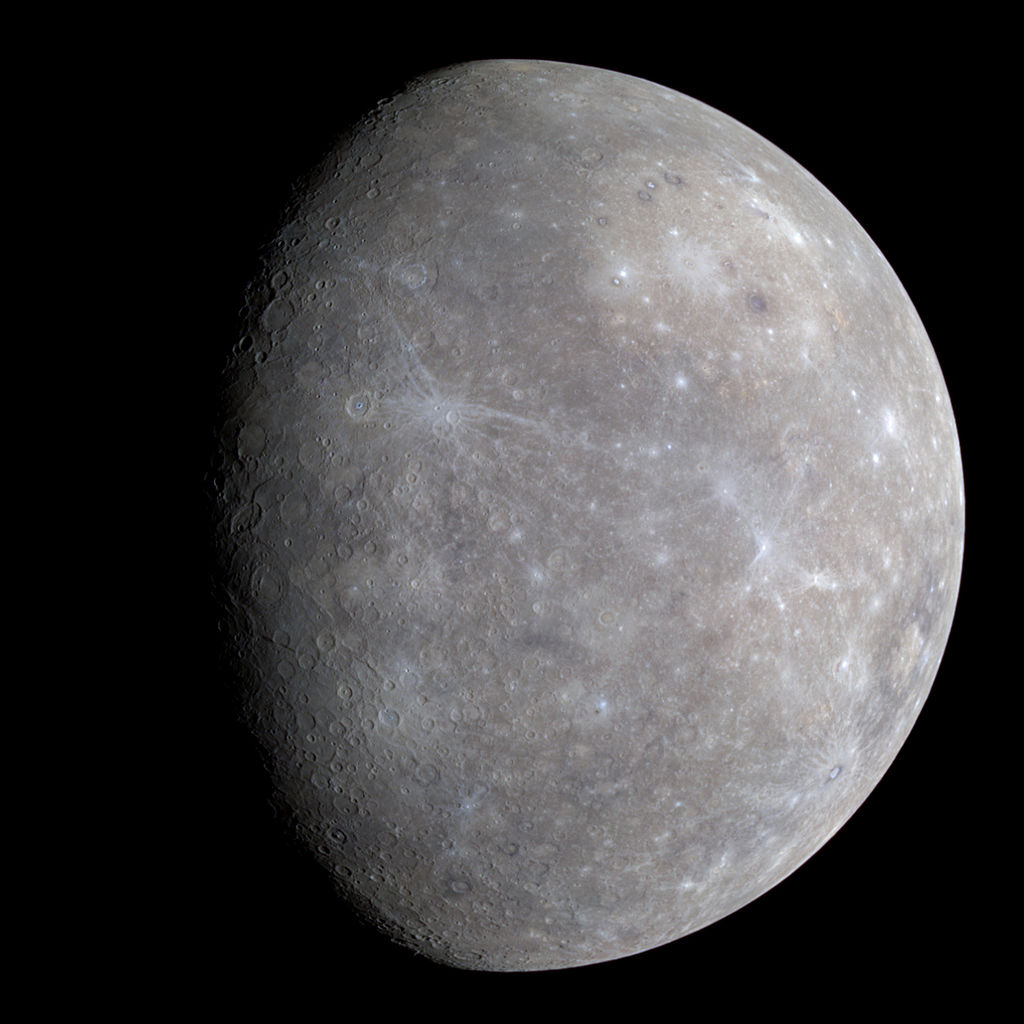OK, as promised, I’m going to talk about Comet 41P/Tuttle-Giacobini-Kresak this week, but there’s also another elusive object out there, and this week may be your best chance to catch either of them.
 The planet Mercury is nearing its most eastern declination from the Sun this week, meaning from our point of view it’s at its farthest from the Sun, and visible for the longest period of time after sunset. Being a speedy planet close to the star, it doesn’t stray far and then doesn’t stay long, so look while you can. Find a place with a clear western horizon and look for it as the sky darkens, maybe a half-hour after sunset. Venus is already gone into the morning sky, but you can still see Mars out there, feeble and dim. Mercury is the surprisingly bright object (much brighter than Mars) about 15 deg below Mars, or about the width of your four fingers at arm’s length.
The planet Mercury is nearing its most eastern declination from the Sun this week, meaning from our point of view it’s at its farthest from the Sun, and visible for the longest period of time after sunset. Being a speedy planet close to the star, it doesn’t stray far and then doesn’t stay long, so look while you can. Find a place with a clear western horizon and look for it as the sky darkens, maybe a half-hour after sunset. Venus is already gone into the morning sky, but you can still see Mars out there, feeble and dim. Mercury is the surprisingly bright object (much brighter than Mars) about 15 deg below Mars, or about the width of your four fingers at arm’s length.
Now for Comet 41P. This is an unusual pass, because it’s moving close to Earth on its way towards its closest approach to the sun (perihelion), so it’s growing brighter AND bigger in apparent size at the same time. Its perihelion is still a good distance away from the sun, actually greater than 1 AU (1 AU = “Astronomical Unit” = average distance from Earth to Sun) so the characteristic comet tail won’t be all that impressive, but its size – if you can see it – should be. Closest approach to Earth will be the night of March 31 (Friday), at 13.2 million miles, but it should continue getting brighter all through the first week of April.
The key here is not pinpoint accuracy, it’s DARKNESS. The coma – the fuzzy cloud of dust around the comet’s nucleus – is already enormous. The coma is, no kidding, being reported as about the same apparent size as the full moon, but it is so diffuse it doesn’t reflect much light, so it’s dim, lurking in plain sight, but just beyond our ability to detect it with the naked eye.
What you need is a clear, dark night, and a wide-field instrument – like a short focal-length telescope, or some hefty binoculars, OR a long-exposure camera. Don’t zoom in too much, or you’ll find yourself searching for a tree and missing the forest. Instead, try and collect as much light as you can.
41P is just spilling out of the center of the bowl of the Big Dipper on the 26th, and moving straight out of the bowl. By April 2, it will be right next to Alpha Draconis, the bright star halfway between the stars at the end of the Little Dipper and the kink in the Big Dipper’s handle. Again, it’s big… Just dim. So I can draw you a chart (try this one), but drilling into a particular spot like you’d do looking for a distant galaxy is not the strategy here. Let the dim crescent moon set, let the sky get dark, get your eyes adjusted, and then scan a wide field in the center open edge of the dipper…. And good luck!
I’m very curious to hear if anybody can spot this comet in the next couple weeks. I’ll be trying and will let you know what I see! Just as before though, if you miss this one, there’s another on the way next month that’s already starting to show in the morning sky, PROBABLY with a better tail…
Get Out There
Troy
flying-squirrel.org

Always looking UP !!
LikeLiked by 1 person
Great post. With Venus such an easy target, especially over the last couple of months,I always look forward to the challenge of finding Mercury. Every time I do, it’s always with a bit of shock, “Hey! There it is!” Almost as soon as the words are out of my mouth, it disappears into the night. Good luck. I hope you can see it.
LikeLiked by 1 person
Thanks, Scott – I actually got a peek at Mercury last night, but like you say it was brief. Just too many clouds out that low to the horizon to keep a view of it for long. Still haven’t had a good chance at 41P, seems like the spring haze has already doomed me!
LikeLiked by 1 person
I’m glad you were able to see it. Like I said over on my website, I love to see Mercury. It kind of hides right under whatever level of understanding of astronomy most people seem to have, so to be able to see it, and point it out to people as they walk by, is really a great thing. I had overcast here most of the day yesterday, but the skies opened just enough in the early evening for me to see it, wave hello, and then watch it get swallowed up again by the overcast. It all happened so fast I didn’t have chance with 41P. Maybe this weekend. I hope you can, too.
LikeLike